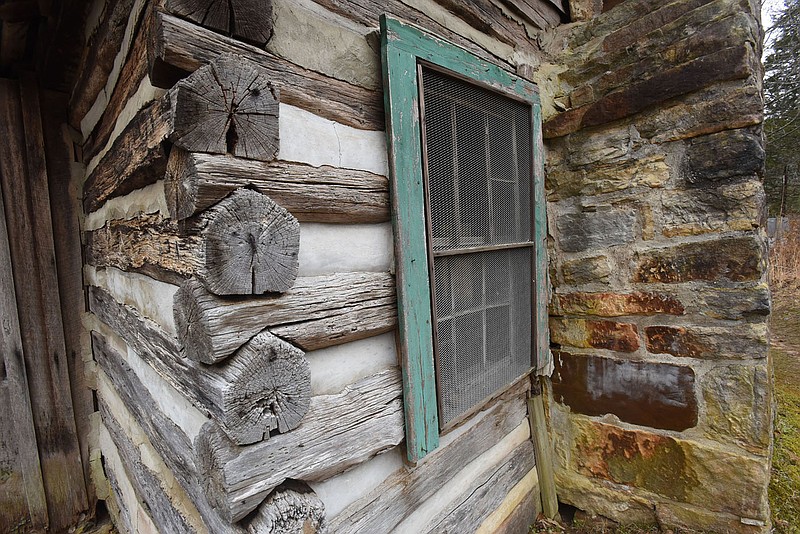The water is cold, and it may be low, making winter a prime time to visit the Buffalo National River and tour historic farmsteads situated along the waterway.
The Villines family farmstead sits just up the hill from the Ponca low-water bridge. A gentle, one-half mile trail loops around the farm that dates back to the mid-1800s. Visitors can see the family's dog-trot style log cabin, smokehouse, outhouse and log barns. They're still standing thanks to some upkeep by the National Park Service.
The farm is tucked away a short distance from the river, so it's easy for paddlers and hikers to miss when starting a float or hike at the Ponca bridge. The trail to the farmstead starts on the south side of the concrete slab bridge that's a favorite starting point for Buffalo River float trips.
Follow the trail uphill and to the right a bit. A log barn and shed are the first buildings visitors see. The path goes a short way through a fallow field and then to the Villines log cabin and the smokehouse, outhouse and root cellar.
The farmstead reveals the history of James A. Villines. "Beaver Jim," folks called him, because of his skills as a trapper. Beaver Jim (1854-1948) moved to the farm in 1882 after marrying his bride, Sarah.
Touring the farm today, one can picture the hard work of making a living in this hardscrabble Buffalo River land.
"Imagine the never-ending tasks of planting, hoeing, harvesting, canning, fixing, making do, sorghum boiling and doctoring that made up the self-sufficient lives of the Villines," reads an information panel at the farmstead.
Two visitors from Louisiana explored the farmstead on a chilly Friday in mid-December. They stepped up on the front porch of the cabin and peered through the windows. It's unlawful to go inside the cabin, signs say, but the two front doors are unlocked.
There was evidently electricity inside at one time. An electric light fixture on a ceiling can be seen through a window while standing on the porch.
A root cellar was the family's refrigerator. Beaver Jim took some respite there on hot summer days. A Park Service sign reports that Jim liked to take afternoon naps in the root cellar.
The smokehouse was important to the Villines family. In early winter, they'd butcher hogs and smoke hams and sides of pork over low heat in the log smokehouse.
They'd salt the pork first, then let it smoke. Well-smoked meat lasted for months without refrigeration, reads a sign at the smokehouse.
Other information says there is no known photo of Beaver Jim, but points out that he was born near Boxley and lived his entire life within a mile of where he was born.
It's easy to overlook the historic farmstead when the river is flowing and paddlers are eager to get on the water. Winter is an ideal time to visit the farm, hike the trails and enjoy the river at this quiet time of year.
Elk may be seen in the fields around Boxley and Ponca. The Ponca Elk Education Center, operated by the Arkansas Game and Fish Commission, is open Wednesday through Saturday during winter.







More News
More Buffalo farmsteads
The Parker-Hickman farmstead is open to visitors near Erbie campground. From Jasper, follow Arkansas 7 north to the sign for Erbie campground. Turn left on the dirt road. Follow it just beyond the campground to the farmstead.
The Collier homestead is also open for exploring. It’s located near the middle section of the Buffalo at the Tyler Bend visitor center, along U.S. 65 south of Harrison.
Source: National Park Service
